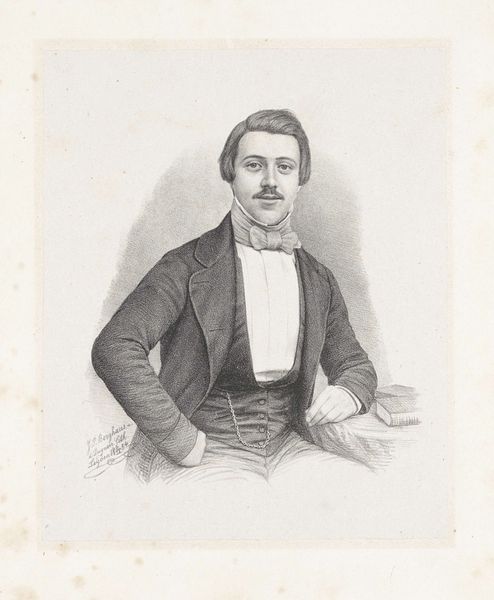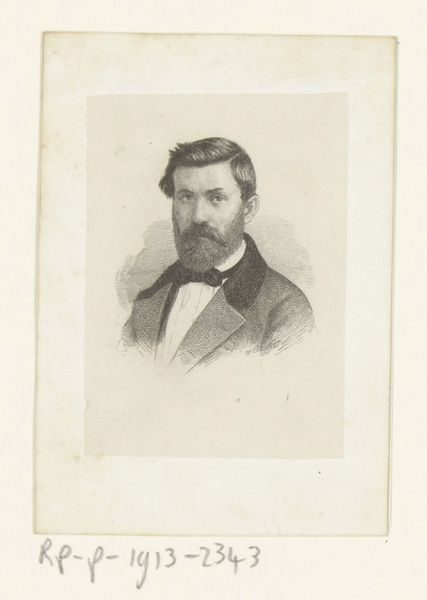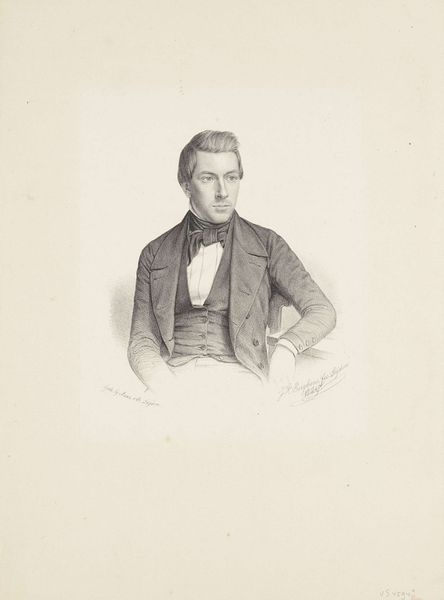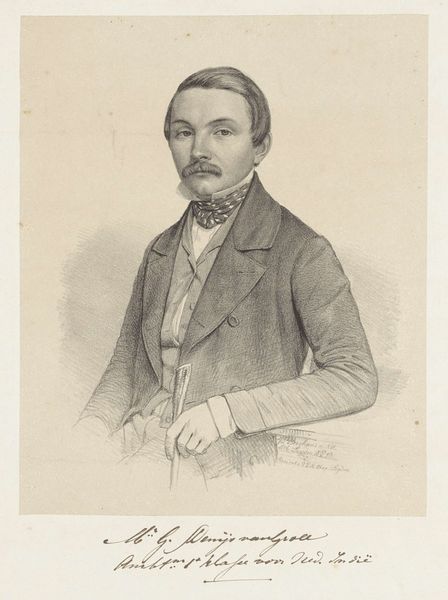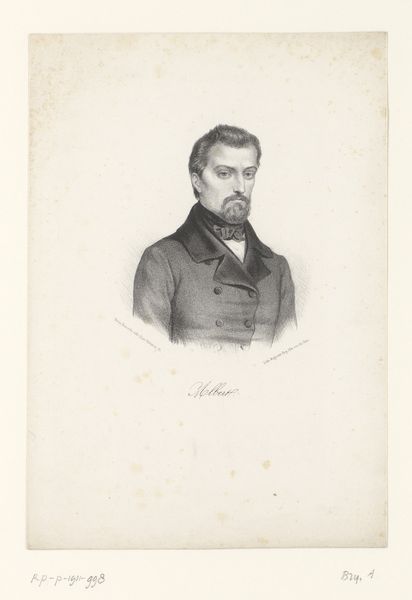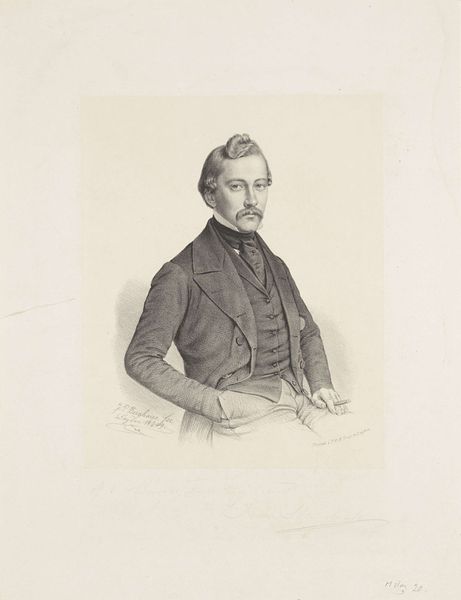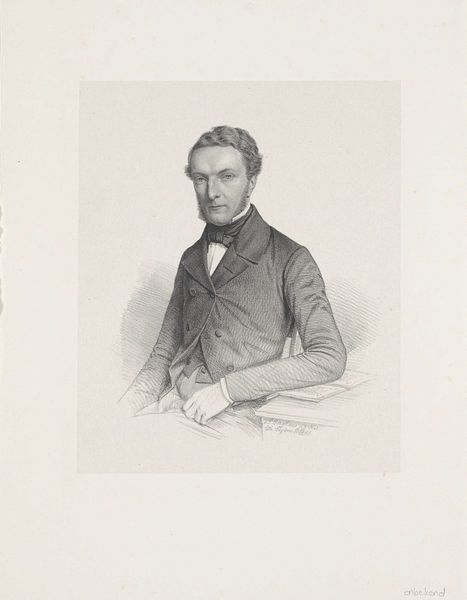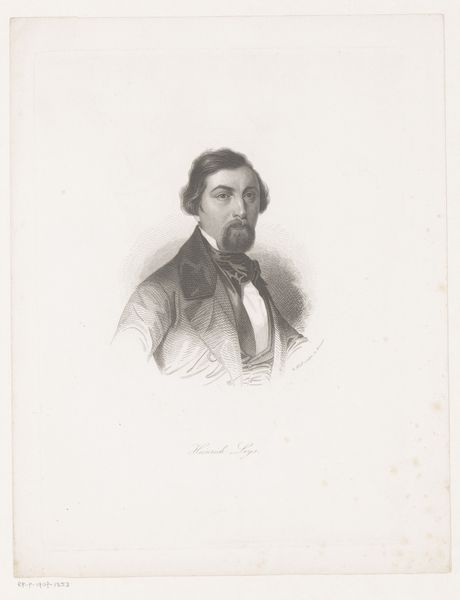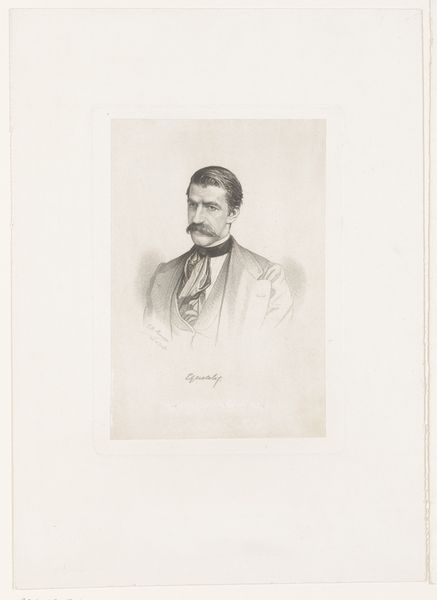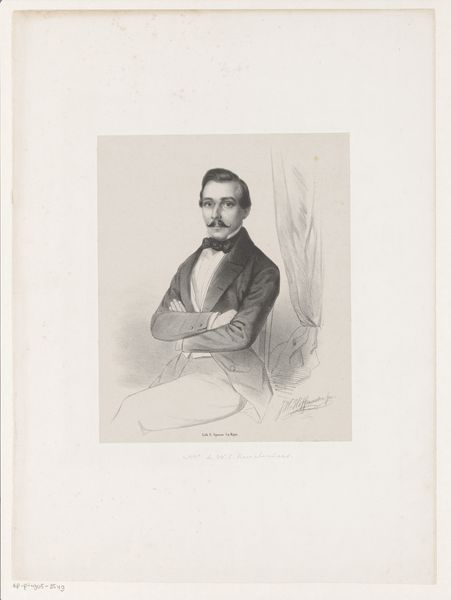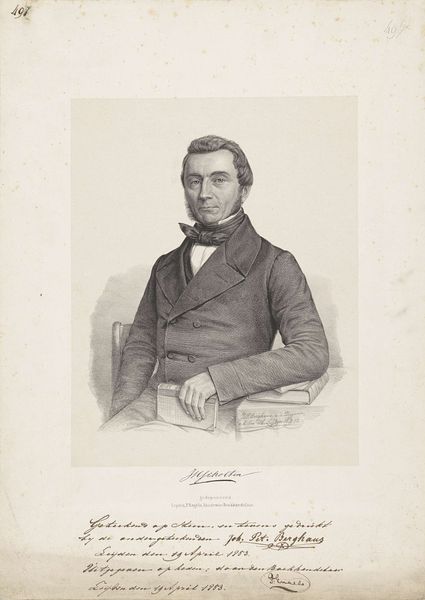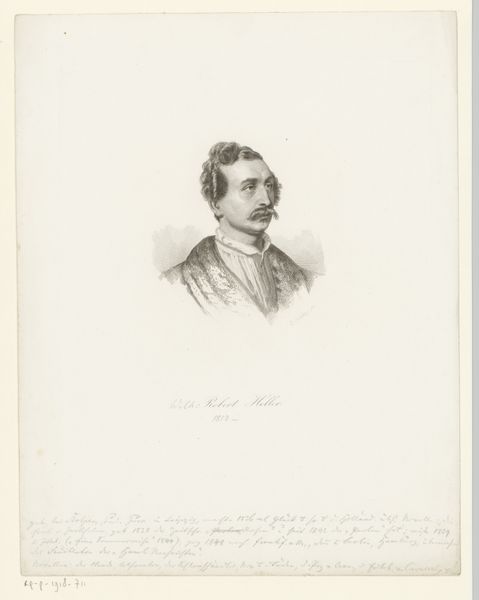
drawing, pencil, graphite
#
portrait
#
drawing
#
pencil drawing
#
pencil
#
graphite
#
academic-art
#
graphite
#
realism
Dimensions: height 338 mm, width 255 mm
Copyright: Rijks Museum: Open Domain
Curator: This graphite drawing, possibly made between 1852 and 1858, is titled "Portret van B.J. van Dijk" and is attributed to Johann Peter Berghaus. It currently resides here at the Rijksmuseum. Editor: My first impression is the artist aimed for precise realism. There is an almost photographic quality achieved purely through graphite on paper, lending itself well to ideas around replication and labor during that period. Curator: It speaks to the increasing importance of portraits in solidifying middle-class identity in the 19th century. These drawings offered more accessible options compared to painted portraits. Think about the expanding art market and who could afford such representations. Editor: Exactly. The materiality emphasizes that accessibility. The readily available pencils and paper contrast sharply with the skills required to manipulate them into such a likeness. Did the artist consider how production democratized portraiture, or were they purely acting on commission? Curator: It's likely a mix. Berghaus likely navigated between commissioned works and perhaps seeing drawing as a form of social mobility, mirroring Van Dijk's own rise in status through professional or economic advancement. Look at how the clothing and his seated pose signal affluence. Editor: That is right, you can sense aspirations in every stroke of the pencil: the textured weave of the jacket, the neat arrangement of the bow tie, they all come together. And his carefully positioned hand that highlights its rendering; it is as much about material possessions as it is about social stature. I see almost hyperreal elements here that really convey those subtle societal messages about what it is made of and means. Curator: Ultimately, this portrait captures not just a likeness, but also a moment of societal change and aspiration preserved through accessible and readily available art. Editor: It becomes a document of its time, revealing how artistic materials were employed to produce and replicate images and convey social status and identities that shape our understanding of the past.
Comments
No comments
Be the first to comment and join the conversation on the ultimate creative platform.
